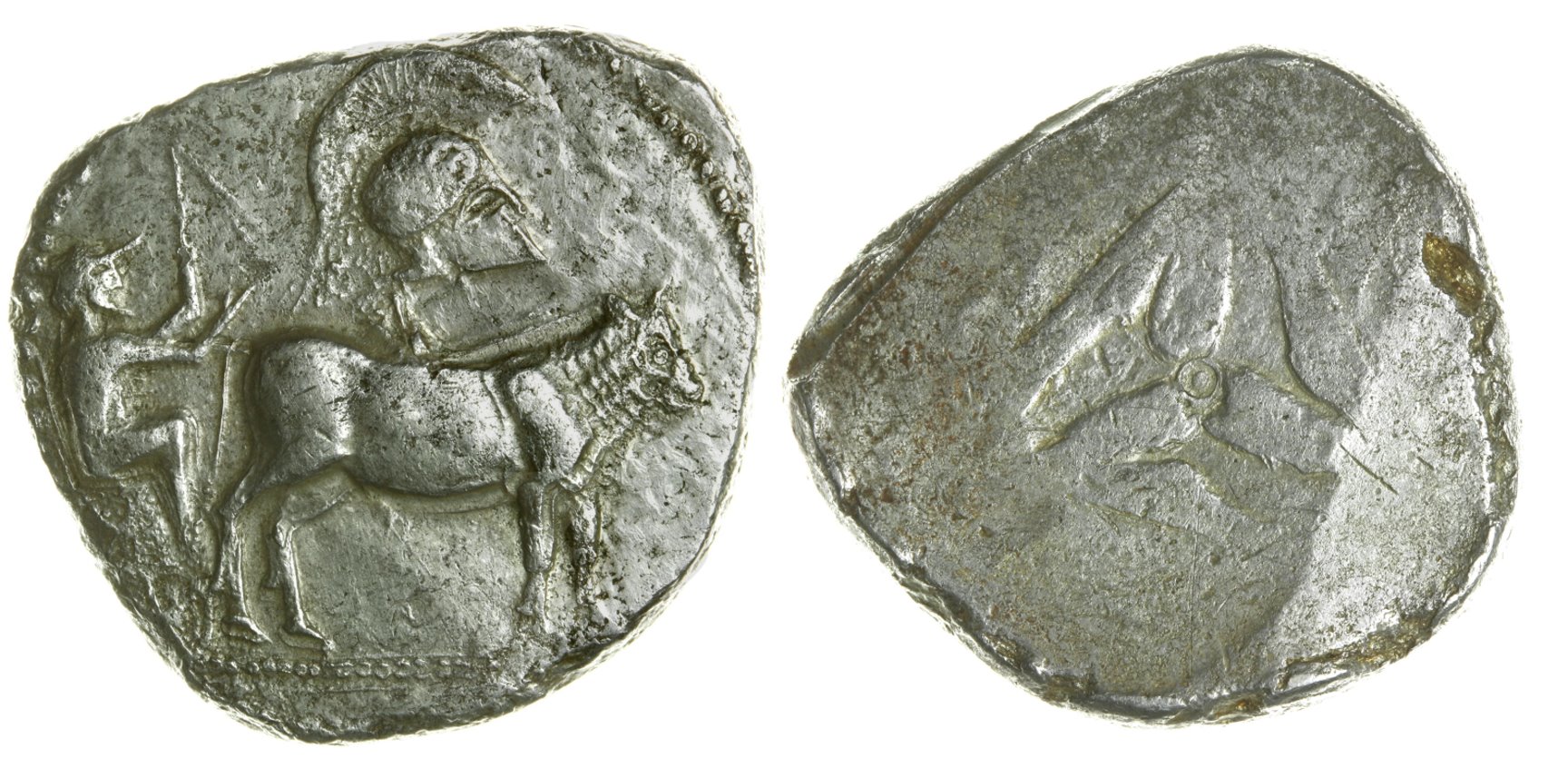Ancient Greek World, Thraco-Macedonian tribes Large silver piece, around 500 BC
With the beginning of silver coinage in the Ancient Greek world around 500 BC, the Thraco-Macedonian region (modern East Macedonia and Thrace, Greece) assumed a particular position. Unlike in, say, Athens, Aegina or Corinth, whose first circulating coins weighed between roughly 8g and 17g, the abundant supply of metal meant that large silver pieces were produced by the tribes settled in this region. Researchers consider the specimens, some of which weigh over 40g, not to be the normal local currency but rather silver that was intended for export and standardised using pictorial designations, not dissimilar to precious metal ingots with standardised weights. This means that the specimen is still an article or a medium of exchange that was already standardised and not a coin in the generally accepted sense of the word. There is source documentation for some of the ethnic groups that issued them; the existence of other tribes is merely inferred with lesser or greater certainty from the inscriptions on the ingots and from finds.
[Data record Id. 57547]
